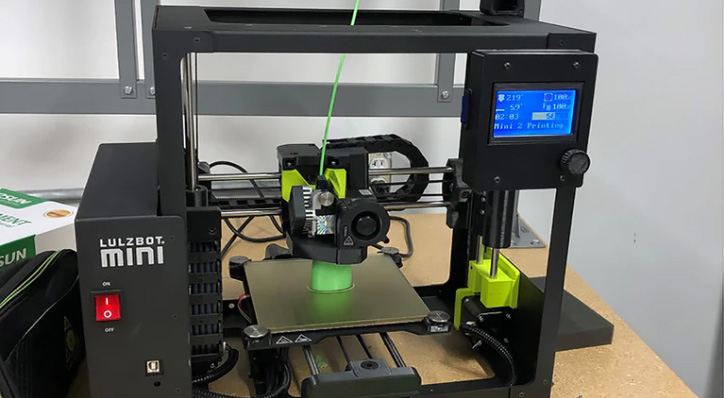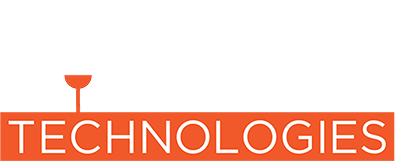Connecting Generational Dots in Workforce Development

To graduate from elementary school 3D-printing to industrial-scale additive manufacturing, metalcasters must prime the talent pipeline.
I’ve sold 3D-printers for a long time. I’ve been involved in developing them on the materials and hardware side almost my entire career. Recently, I got my hands on a Lulzbot 3D-printer, right around the same time that our local AFS Chapter acquired its own "Foundry in a Box" kit.
Believe me, getting a 3D-printer when you're 45 is just as fun as getting a 3D-printer when you’re 14. I took it home to test the theory, and the first couple spools of filament were gone before you could say, "Hey, it's my turn to print!" For $25 worth of plastic spaghetti, my youngest had logged back into her middle school TinkerCAD account, downloaded some cookie cutters from Thingiverse, and was back and forth drawing models, customizing Lego pieces, tweaking old dollhouse furniture, and scaling up a poseable velociraptor skeleton. The cookie cutter designs became chocolate molds and Christmas tree decorations.
In the middle of this creative polymeric chaos I printed some stuff for work: a few brackets, a couple prototype handles, some jerkbaits, … and some little patterns for the Foundry in a Box. 14-year-old synapses fired and then: “Whoah! We can 3D-print stuff and then make it out of metal. This is so cool.”
My oldest child offered to make a TikTok of the Foundry in the Box, because in her words, the YouTube videos were just too "old." (I had to look up TikTok after that.) I couldn’t help but notice the difference when it came to instructional information from our industry, versus other non-foundry sources. When I compared the fun, educational, and practical how-to entertainment that is flooding the Internet versus the accessibility of typical foundry training content, the generational divide was obvious.
I’ve been learning about making and using low-cost 3D-printed patterns to make "lost PLA" patterns for plaster and investment casting from YouTube posts put up by LulzBot, NYC-CNC and backyard metal casters, not from foundrymen or our usual training sources. I do supplement with technical readings or the occasional phone call to a foundryman when I need to go deeper.
One big difference is that YouTube content is free. The other big difference is that you can watch a few videos, then try a technique in your shop or garage. If the goal is to inspire a new generation to mold, pour, and manufacture, exposure may be the best metric to maximize.
So, as much as our industry has been ruminating on recruitment and workforce development lately, it's probably time to take a look at our marketing channels as well as our content. The future employees we need to proceed are tech savvy, and hands-on. They are in school systems all over North America. However, odds are that they either have not heard of metal asting, or they think it's one of those dirty low-tech jobs that you might not want to get into.
Meanwhile, our high school STEM teacher (who also leads the robotics club) is excited to have a Foundry in the Box demo, and so is the middle school teacher.
While our industry has been working to develop more updated content, given the low number of students that are entering the industry we must keep working on recruitment. Publications like the Melting Pot, and tools like Foundry in a Box provide high-impact experiences when you can get in front of your audience, but there is no marketing more powerful than a social media campaign gone viral. What we need to do is take this a few steps further – and put the 101-level courses out there for everybody to access.
Or, take a look at how companies sell hands-on products. Do-It Molds, Alumite, and other companies teach and inspire with videos that get updated regularly. Do-It Molds is turning bass-casters into metalcasters – and they aren’t even really trying!
Our FEF schools need incoming students to become degree candidates almost as badly as many foundries need new faces to populate their shop floors. With endowment scholarships available, and hungry employers looking for qualified candidates, there are lots of incentives today for students to go to school with a plan to be in the metalcasting industry.
There are foundries that have 3D-printers in daily use, and 20-something foundry engineers who are using 3D-printers as their "pattern maker." Those of you now in the industry should encourage your local STEM / STEAM teachers to borrow the chapter's Foundry in a Box, but don’t stop there. Use virtual reality to design a foundry floor, and explore smart technologies to build a robotic finishing work cell. Acquaint them with Six Sigma and lean principles to understand how to deliver what customers want with minimal waste. In other words, go beyond showing how a metal part is made; show how they fit into the foundry of the future.
We need to start connecting the dots to take advantage as an industry. Talk to your local AFS Chapter. Talk to FEF board members. Talk to your STEM / STEAM teachers. Talk to your local vocational schools. Talk with metalcasting industry leaders. Show up and offer a sand casting or factory floor demo at the library, or your local maker space. The talent will rise to the top of the melting pot.
Will Shambley is the founder of New England Foundry Technologies, providers of foundry automation, robotic solutions, additive manufacturing, 3D scanning, simulation software, consumables, as well as marketing and consulting services. Contact him at [email protected]

